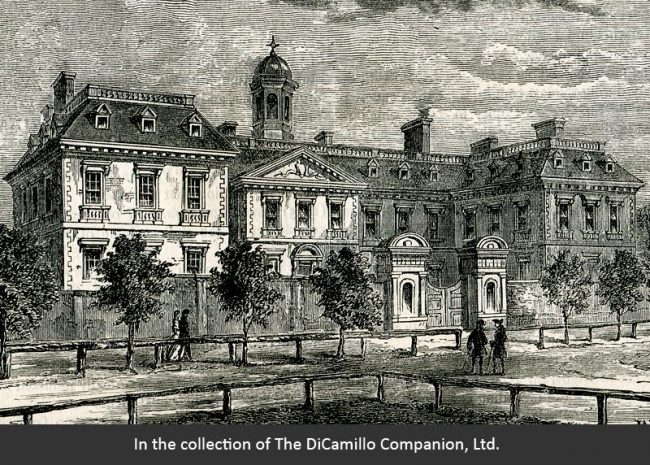
An 1880 engraving of the House from "Old and New London"
House & Family History: Clarendon House was built between 1664 and 1667 to the designs of Sir Roger Pratt for the Lord Chancellor, Edward Hyde, 1st Earl of Clarendon. The House was a virtual palace situated at the top of St. James's Street in the Piccadilly section of London; yet, for all its grandeur, it had a short life, being demolished in 1684, one year after Lord Clarendon's death (the property was sold, the House demolished, and the site redeveloped in rapid succession). Clarendon House was one of the most admired buildings in England, and, even though it stood bit a short time, its influence was enormous, with many notable houses influenced in their design by Clarendon House, including Coombe Abbey, Holme Lacy, Stanford Hall (Leicestershire), Hanbury Hall, and, most spectacularly, Belton House.
Comments: John Evelyn described Clarendon House as "without hyperbolies, the best contriv'd, the most usefull, gracefull, and magnificent house in England…Here is state and use, solidity and beauty, most symmetrically combined together."
Architect: Roger Pratt
Date: 1664-67
Title: Belton House Guidebook - 1992
Author: Tinniswood, Adrian
Year Published: 1992
Reference: pgs. 10-11
Publisher: London: The National Trust
ISBN: 0707801133
Book Type: Softback
House Listed: Demolished
Park Listed: No Park
Past Seat / Home of: Edward Hyde, 1st Earl of Clarendon, 17th century.
Current Ownership Type: Demolished
Primary Current Ownership Use: Demolished
House Open to Public: No
Historic Houses Member: No